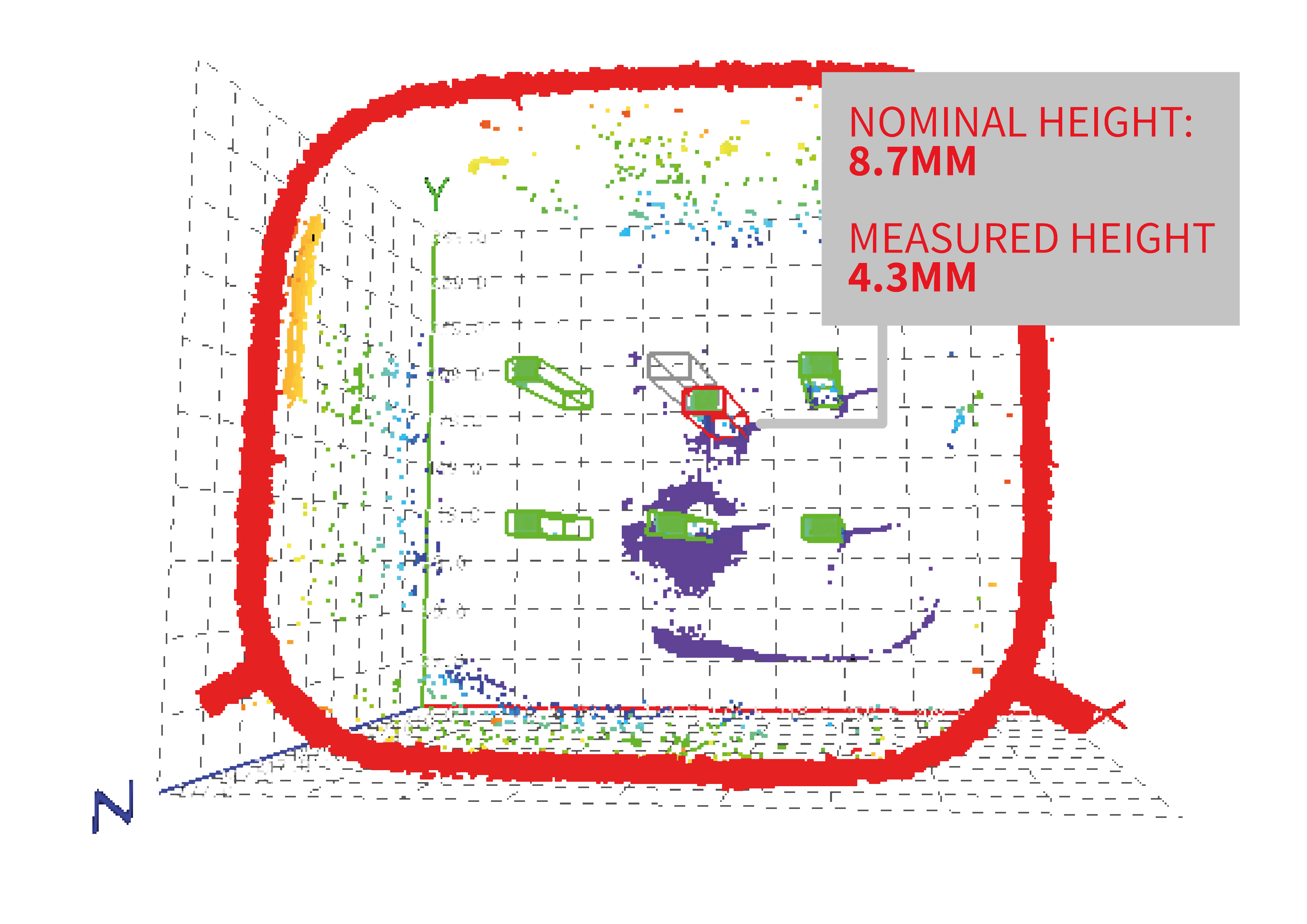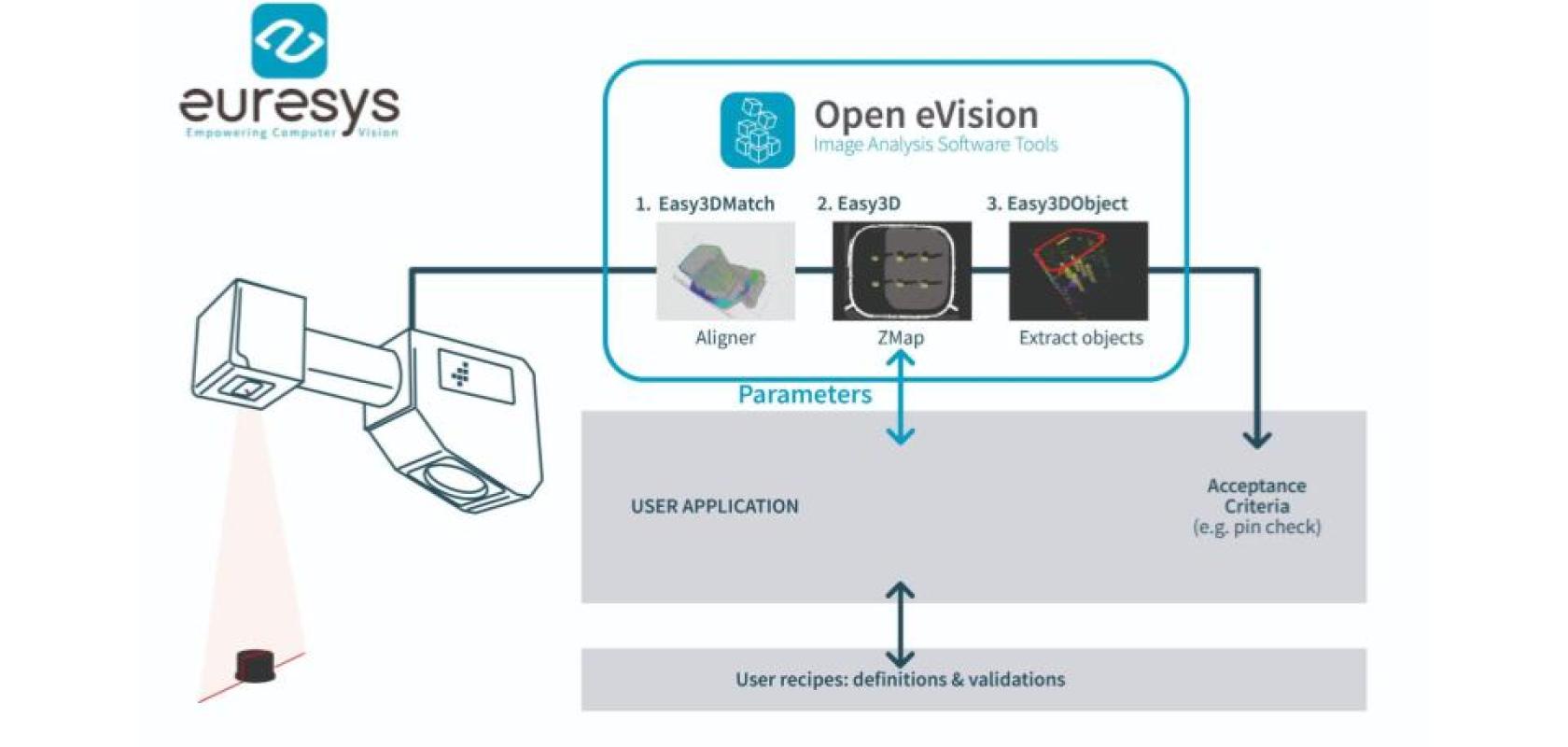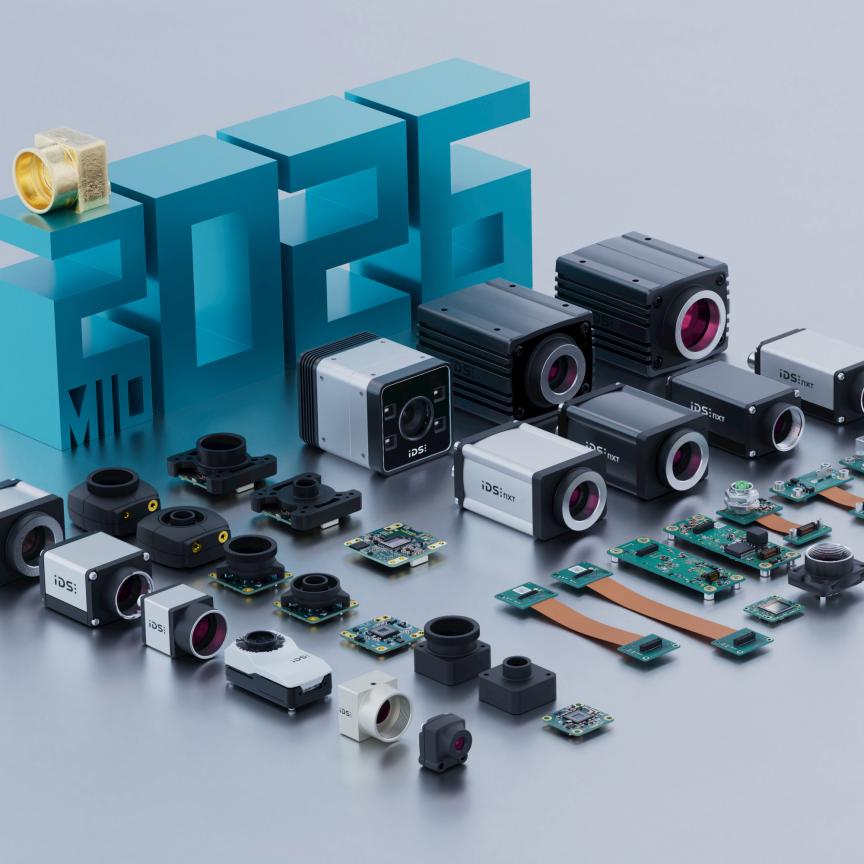How a Korean electronics manufacturer leveraged AT’s C6 3D scanner paired with Euresys’ Open eVision 3D libraries for unprecedented 3D inspection performance.
Connectors are a crucial component in virtually any electronic device. Any defect can result in a malfunction of the whole system. This is why quality assurance is essential – both for the connector manufacturers and for their customers.
Performing an automated, 100% visual inspection of connectors is a challenging endeavour for many reasons: the number of variants is nearly endless, miniaturisation means the connectors are becoming smaller and smaller with more and more pins and contacts, and the geometry makes it difficult to inspect from different angles – for example when the pins are protected by a surrounding housing. Furthermore, the inspection must be performed in-line at high speed to remain economical.
A leading Korea-based manufacturer of connectors for the electronics industry tackled the challenge and decided to implement an advanced 3D inspection system for the inspection of their connectors. The system is a combination of Automation Technology’s (AT) C6 Series of 3D scanners, Euresys’ Open eVision 3D vision libraries, and application-specific inspection algorithms.
Fastest 3D scanners in the world
Among them, AT’s C6 Series of laser profilers are built on a novel, proprietary sensor platform that supports the latest GigE Vision/GenICam 3D industry standard. These new laser profilers offer an impressive combination of extremely fast and highly precise resolution, reaching up to 4,096 points per profile, a profile speed of up to 200 kHz, and high dynamic range 3D image capture.
The C6 series builds on a new proprietary sensor chip that allows unprecedented speed thanks to its unique WARP technology (Widely Advanced Rapid Profiling). This is achieved through the pre-processing of the data within the sensor at up to 29 Megapixels per second to transmit only essential data and increase throughput. The outputs a 3D pixel profile rate of up to 128 million 3D points per second and a measurement speed up to 10 times faster than conventional 3D scanners. This high-speed inspection allows the connector manufacturer to perform 100 % inspection of mass-produced parts without slowing down their manufacturing process.
Precise image acquisition and analysis
Euresys’ Open eVision 3D libraries perform the full 3D vision analysis of the data provided by the AT 3D profilers. It delivers accurate measurements and geometrical data to the application software that compares them with the manufacturer’s acceptance criteria. The vision system is built as a sequence of tasks performed by various Euresys libraries.
First, Euresys Easy3DMatch aligns the connector’s point cloud to the required reference position. This task is typically done using the CAD model of the connector as a reference. However, in cases where CAD is not available, Easy3DMatch can also use a reference point cloud instead. This allows the toleration of larger variations in the physical orientation of the parts during the scanning process, simplifying the overall mechanical setup of the inspection system.
Euresys’ Easy3D library then converts the 3D point cloud into Zmaps at various height planes to be later compared to the connector’s specifications and tolerances.
Finally, Euresys Easy3DObject identifies every single connector pin in the point cloud and measures their geometrical attributes such as width, length, height, position, angle, etc.
This sequence of tasks delivers a complete set of high-precision measurement data to the host application that determines if the part conforms with specifications and decides to sort it out or not.

Example of faulty connection identification: e.g. one pin (2) has been identified as being significantly out of specification (Credit: Euresys)
The user application also provides the inspection parameters to the Open eVision libraries such as the type of connector currently in production.
Seamless hardware and software integration
The successful implementation of the in-line 3D inspection system was made possible by the perfect compatibility between AT’s point cloud data format and Euresys’ Open eVision libraries. This seamless integration allowed the end user to fulfil all its demanding requirements regarding both precision and speed.
Open eVision can perform multiple inspection tasks simultaneously. For example, the 3D measurement of the pins could be enhanced with a quality inspection of the connector housing using the same 3D data or images from another sensor like a 2D camera. Another typical application is the identification of the inspected part by reading a serial number with Open eVision’s EasyOCR or scan an optical code with EasyBarCode, EasyMatrixCode or EasyQRCode.
All Open eVision libraries and tools can run on PC (Windows or Linux) or embedded platforms like ARM computers or smart cameras. This makes them highly flexible to adapt to any system environment.
Another factor of success was the local technical support provided by Fainsec, AT and Euresys' distribution partner in Korea.
“This application is a perfect example of the added value of Euresys’ Open eVision for in-line quality inspection, both in 2D and 3D,” said Dave Park, Sales & Support Manager at Euresys South Korea. “Open eVision performs the key image processing tasks so the end-user or system integrator can focus on the application-specific analytics, building on robust, ready-to-use data and saving precious development time.”
Find out more about Euresys’ Open eVision 3D libraries by visiting the company's website.


